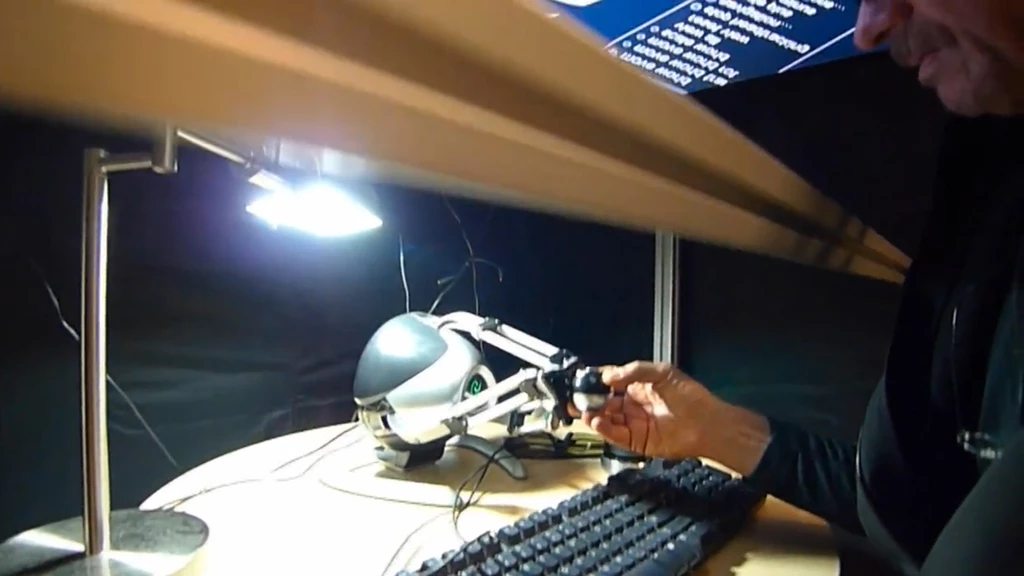It’s not uncommon to see children attempt to reach out and touch objects the first time they don 3D glasses and sit down in front of a 3D TV. Researchers at the University of California, San Diego, have created a new virtual reality device that enables users to do just that. The relatively low-cost device called the Heads-Up Virtual Reality device (HUVR) combines a consumer 3D HDTV panel and a touch-feedback (haptic) device to enable users not only to see a 3D image, but “feel” it too.
The system consists of a 3D HDTV panel placed above a half-silvered mirror that reflects the image from the panel back to the user. The user’s head position is tracked to generate the correct perspective view while they maneuver a touch-feedback device underneath the mirror, through which the user’s hand is still visible. This provides the illusion that the user is literally ‘touching’ the object being displayed.
Its creators say HUVR is ideal for tasks that require hand-eye coordination and is well-suited to training and education in structural and mechanical engineering, archaeology and medicine. The device could be used to visualize and manipulate a 3D image of a person’s brain taken from an MRI, or an artifact too fragile or precious to be physically handled, for example.
“By using HUVR’s touch-feedback device – which is similar to a commercial game control – a physician could actually feel a defect in the brain, rather than merely see it,” explained Research Scientist Tom DeFanti, who is affiliated with the UC San Diego division of the California Institute for Telecommunications and Information Technology (Calit2), and created the device with Calit2’s Virtual Reality Design Engineer Greg Dawe. “And this can be done over the networks, sharing the look and feel of the object with other researchers and students,” Defanti added.
Evolution of HUVR
In an illustration of how fast technology is moving, HUVR evolved from a system called PARIS created 12 years ago by DeFanti and Dawe and their colleagues and students at the Electronic Visualization Laboratory, University of Illinois, Chicago. PARIS, or Personal Augmented Reality Interactive System, used a projection technology similar to HUVR, but was low-resolution, too big to move, and expensive. It required the Silicon Graphics, Inc. computers of the time to render the images and cost upwards of US$100,000 (PARIS is still in operation today, but is now driven by a game PC).
Although passive stereo 3D HDTVs have been available for about a year, active stereo is needed for HUVR. Active stereo generates separate left- and right-eye images that can bounce off mirrors and are separated into left- and right-eye views by the user’s active eyewear, which blink in synchrony with the 3D HDTV’s 120Hz images. The polarization used in passive stereo will not stay polarized when reflected off a mirror, hence the need for active stereo in HUVR and its precedents.
The recent availability of 55” active stereo panel TVs was the key to making HUVR, which is essentially a more lightweight, portable, and – at about $7,000 (without head tracking) – a much cheaper version of the PARIS-based technology. Constructed from a $2,300 Samsung 3DTV panel available at most retail electronics stores, HUVR also offers better brightness, contrast, and visual acuity than PARIS.
The next step in HUVR’s evolution is to create a less expensive, reasonable quality head tracker suited to a desktop device (commercially available trackers currently range from $5,000 to $20,000).





